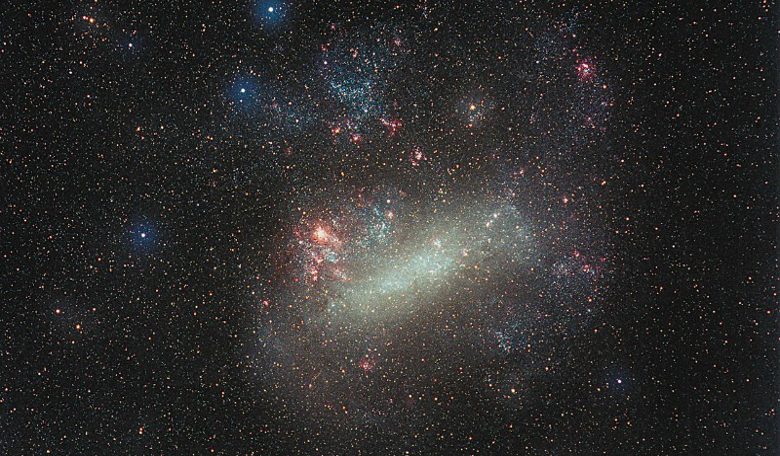An enormous, but extremely faint dwarf galaxy hiding close to the Milky Way has been spotted by astronomers searching through data from ESA's Gaia spacecraft and its discovery could be the tip of the iceberg, with many more similar-type galaxies waiting to be found say the team that discovered it.
Named Antlia 2, or Ant 2 for short after the constellation it was found in, this newly discovered behemoth is similar in size to another of the Milky Way’s satellite galaxies; the Large Magellanic Cloud (LMC). With a gigantic physical size of around 2.9 kiloparsecs, this is the only similarity the two share though as Ant 2 is also incredibly faint – around 4000 times fainter than the LMC.
Ant 2 is so faint, it has been described as having the lowest known surface brightness of any system by far and is approximately 100 times more diffuse than the so-called ultra diffuse galaxies (UDGs) that populate the Universe.
Despite living up to their names as ultra-diffuse, UDGs can still be the same size and mass as the Milky Way, but have a visible star count of only 1 percent. Galaxies such as these are thought to be stripped of their stars by tidal forces or were not able to produce more stars in the first place.
In the case of Ant 2, its unusual characteristics are thought to be due to the former explanation; that the galaxy was originally a substantially more luminous dwarf in the beginning but has suffered prolific tidal stripping from interactions with the Milky Way throughout its history.
These close encounters with our galaxy over time has also had another detrimental effect on Ant 2 – a serious lack of dark matter keeping it all together. The paucity of stars in UDGs has also prompted some researchers – although not everyone agrees with this – to speculate that these type of galaxies are made almost entirely out of dark matter.
Unfortunately for Ant 2 frequent cosy-ups with the Milky Way have stripped this out too, leaving the dwarf galaxy with dark matter calculations ”much lower than that of any other dwarf satellite studied to date,” say the international team of researchers in their research paper and whose lead author is G. Torrealba, from the Institute of Astronomy and Astrophysics, Taiwan.
The good news however is that Ant 2 might not be the only type of galaxy like this; ones that are several times larger when compared to other systems of similar luminosity, but about three orders of magnitude fainter. With the help of Gaia, which is adept at helping astronomers pick out these odd-balls from the billion stars it aims to observe over a five year period, more galaxies like Ant 2 could be uncovered soon.
For more on this research, see here.











